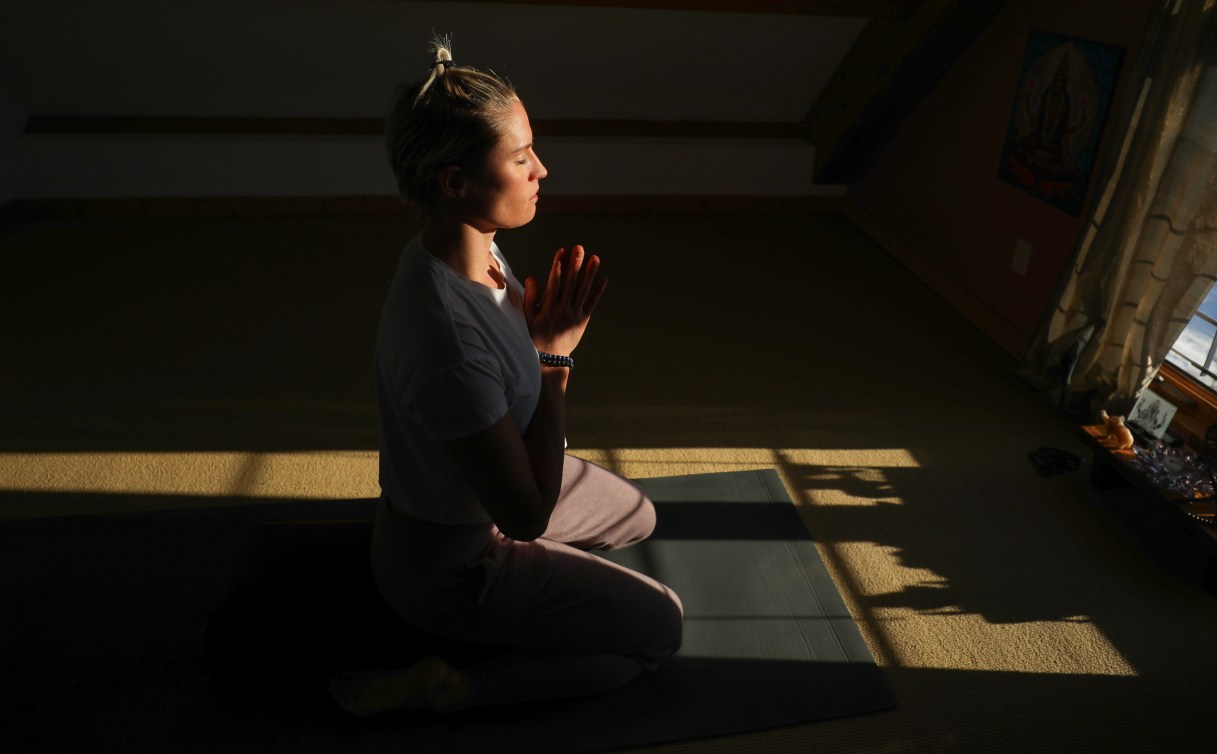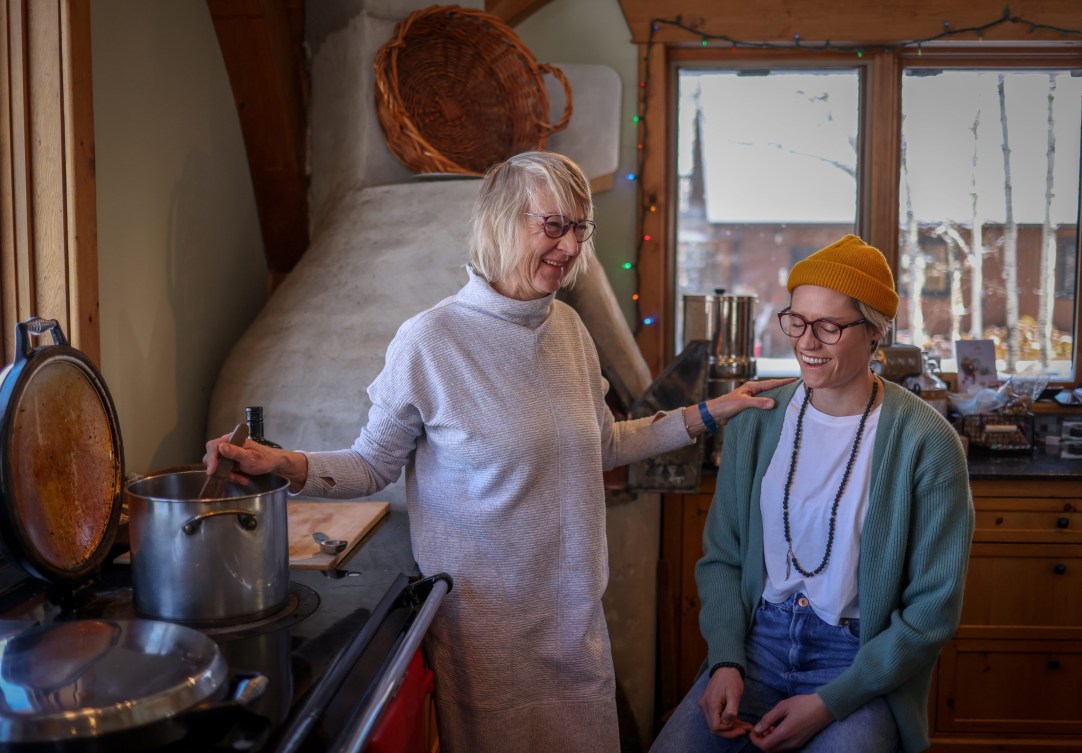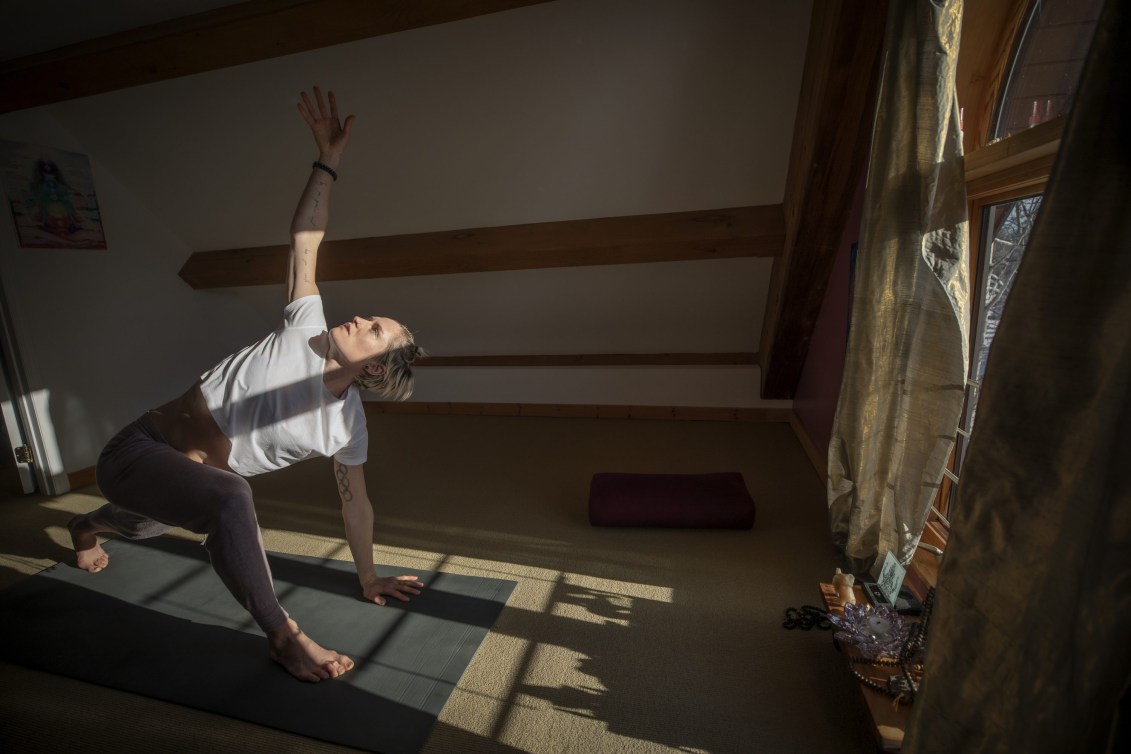Georgia Simmerling: “I am ready to tell my story”
PHOTOGRAPHY BY LEAH HENNEL
Trigger Warning: Eating Disorders
Georgia Simmerling, following an unprecedented athletic career, is settling nicely into retirement after her fourth Olympic appearance this past summer. Now based in Calgary — and engaged to Stephanie Labbé, goalkeeper of Canada’s Olympic gold medal-winning women’s soccer team — the 32-year-old operates AG Sports Inc., a female-focused marketing agency.
But her wealth of experience also includes significant challenges, which, over the years, she’s kept to herself. Now, in support of Bell Let’s Talk Day, Simmerling has decided the time is right to share her journey towards better mental health.
I am ready to tell my story.
For nearly a decade — through the prime years of my athletic career — I suffered from bulimia.
Most people view me as confident and strong-minded, a woman who’s “comfortable in her own skin.” I was the athlete who would wear less clothes than the rest of the team. If we were outside, I’d be the first one to take off my T-shirt and work out in my sports bra and shorts. But there are two sides to every story and, looking back on that behaviour, I think I was searching for acceptance from others.
The other side of my story is one of shame and self-harm.

When I was young and even as I grew into a teenager, body image — what I looked like — never crossed my mind. Not once. For a woman, that is almost unheard of. So, in a sense, I feel lucky.
But when I was 19, something changed. I started noticing my body. The year before, I had been named to Canada’s alpine skiing development team, a program that was designed to groom emerging talent for the 2010 Olympic Winter Games in Vancouver.
Those summers with the development squad — 2007 and 2008 — were two of the funnest of my life. Ten girls from across the country coming together to become the fittest, strongest, and fastest they could be. We trained two or three times a day, five days a week. We were in the gym a lot, lifting big weights. I was squatting 300 pounds. At 5-foot-8, I was 155 or 160 pounds, mostly muscle. I was average sized for my sport, probably even on the smaller and leaner side compared to others.
I was in a gravity sport. I was a downhill skier. Weight was good.
Until (I thought) it wasn’t.
Getting on a plane before the 2008 season — we were heading to a training camp in Chile — I remember being conscious of my body. Something had clicked. I was not happy with what I saw in the mirror. I thought I needed to lose a little fat. It was a mindset that felt harmless at the time. I started noticing what I was putting in my body. Noticing, though, quickly turned into a fixation: don’t eat fat and you won’t get fat.
At that camp I injured my left knee and was sent home to recover. Every day I was in the gym trying to fix my body, but also change it. It’s normal to warm up on the stationary bike, but I would ride for an hour before my workout — which alone could last two and a half hours — then finish with more time on the bike.
I was an elite athlete, conditioning is part of the job, but this was turning into an unhealthy obsession.
I fibbed to our trainers about how many minutes I’d spent pedalling the bike. Daily, with as little clothing as possible, I weighed myself. A strength and conditioning coach came up and told me it’s okay to weigh in just once a week. I didn’t like hearing that.

In the kitchen, too, I cracked down. Preparing my own food, I avoided all fats, including nuts and peanut butter. I wouldn’t even cook with oil. Anything that might make me heavier was eliminated.
I just wanted to be smaller. My moving target: “five pounds lighter.”
For me, it was like a game. Can I get thinner? Can I get leaner? Can I get a quote-unquote better body?
After six weeks of rehab, I rejoined the ski team. My appearance was greeted with a great deal of surprise — and it wasn’t only my hair, freshly cut and dyed.
I had dropped nearly 15 pounds.
Staff members obviously knew something was wrong. They knew something had shifted. I blamed the weight loss on the injury. I was upset they were concerned for me. I just wanted to be left alone. I had one-on-one meetings with psychologists, nutritionists, coaches, team doctors. They were trying to fix me, but I didn’t want their help. I was far from ready to tell anyone I had a problem.
The next five years were the worst of it. Racing overseas, I had less control over what I could put in my body. As a team, travelling from one small mountain hotel to the next, we were often served a set menu, meaning little choice. That was a struggle for me. I wasn’t happy internally, even though I might have appeared to be happy. Instead of finishing a plate of pasta — fuel for the day ahead — I would take a few bites, then sneak fruit into my room and eat maybe two oranges and two apples. Fruit wasn’t carbs, I thought. Fruit wouldn’t make me fat.
Ironically, when I was in Europe, competing against the best skiers in the world, I felt comfortable in my body, I felt strong. I was among other athletes, surrounded by strong women. Problems arose when I would come home. I’d go to a yoga class and, suddenly, I wasn’t among powerful ski racers. I was among size 0’s and 2’s — and I would feel big and fat.

Bulimia slowly, sporadically, crept into my life.
According to Johns Hopkins Medicine, “bulimia is an eating disorder. It is characterized by uncontrolled episodes of overeating, called bingeing. This is followed by purging with methods such as vomiting or misuse of laxatives. Bingeing is eating much larger amounts of food than you would normally eat in a short period of time, usually less than two hours. You may feel like you can’t stop or control these episodes of binge eating.” This was me to a T. I could control only so much — and sometimes I lost control.
I never craved unhealthy foods. I would never eat six burgers. Cold cereal was my guilty pleasure. After dinner, one giant bowl would turn into four or five. There was a sense of urgency. Almost before the first bowl was done, I’d be up to get more cereal. Because you don’t want it to end. But after eating to the point of feeling ill, guilt would set in. Then I would make myself sick because I was so uncomfortable. It was saddening. I didn’t feel good about myself at all.
I think back and wonder how I managed to keep this illness from my parents. My mom often worked late nights and my dad is a morning person, so he was asleep early. When I moved out, I distinctly remember telling myself, “You’re 26 years old, get your shit together, and stop doing this.”

It only got worse. Living alone, I could binge eat all I wanted.
This vicious cycle took place in the evenings. I ate in front of the TV. It made me feel like I wasn’t doing something wrong and it distracted me from how much food was going into my body. I would go to bed feeling ill, either on a completely full stomach or having recently made myself sick. Excessive exercise may have started first, but the bulimia became an extension of my extreme behaviour.
When I switched to track cycling in 2015, I had gotten a bit more of a grip on my eating disorder. Partly because I’d thrown myself into the sport and the Olympic possibilities, thinking, “I have no days to spare to make this dream a reality.” The over-the-top cardio sessions I had done as a skier probably helped me, in a twisted way, “make it” in cycling. Because my single-minded desire to commit, to funnel my energy, created success in that regimented lifestyle. After all, fittest cyclist wins.
There were days when I would lapse, but for the most part, I had a better relationship with food. The sense of fulfillment — or earning my calories — played a big role. While cycling, I could eat carbs and not feel guilty. But during my first year with the national team, one nighttime conversation shifted to binge eating. A teammate said, “I heard people eat like 5,000 calories in one sitting.” I felt such shame because I knew, “That is me.” But I didn’t say anything.
Eventually I mustered the courage to see a psychologist. I was strong enough to book the appointment, but not strong enough to fully open up. I don’t think I was ready to tell her that this was a problem. After a single session, I never saw a professional again or told anyone — until many months into my relationship with Steph, which began in 2017.
I told her my truth. In fact, after a relapse, I was carrying such shame that, not wanting to keep secrets from her, I laid bare my story. She was kind, supportive, and non-judgmental. I was expecting a lot of judgment, because I had bottled so much up inside, but it never came. I was expecting criticism, but it never came. She just listened and accepted me.

Steph has played a pivotal role in my health. I wanted to be accountable to her — I felt good about myself when I didn’t overeat. So it happened less and less over time. I don’t know if she has been a Band-Aid in covering up my illness, but simply being in her presence has made my relationship with food healthier. I can’t pinpoint it, but one factor is that she loves me for exactly who I am. Her love has encouraged me to love myself.
RELATED: Steph Labbé: A story of depression, a bronze medal and the power of resilience
Eating disorders don’t immediately go away if you tell someone, if you see a doctor. I will always live with this. Once I accepted that, I started to heal. What has changed is my relationship with food — and with myself. It’s taken time to learn to let go. To eat fried food or pasta or other calorically rich food and not be stressed out. To not work out for 10 days and be okay with myself.
I want people to know that body image issues don’t plague only athletes whose bodies are on display. This can happen to anyone. This can happen to any performer in any sport — even ski racing where weight is an advantage.
I hope my story will resonate with those who are struggling. I hope it will encourage someone to speak out earlier than I did, to not carry the burden of shame or guilt or hate. I thought I was alone for so long and I said nothing for nearly a decade.

You are not alone — that’s my overarching message. Someone else is going through something very, very similar. You may think you will be judged, and you might be. I’m sure someone is judging me for this. But no one will judge you more than you have judged yourself. Learning to love yourself is the most important step. And to get to that step, speaking your truth to just one person and accepting love, will start your healing process.
You are loved and people close to you want only one thing — for your happiness and health to shine brightly.
And you will heal. That, I can tell you.
Georgia Simmerling’s athletic resumé features appearances at four Olympic Game, two Winter (Vancouver 2010, Sochi 2014) and two Summer (Rio 2016, Tokyo 2020). Even more remarkable, she competed in three different sports — alpine skiing, ski cross, track cycling — at her first three Olympic Games, something that had never been done by a Canadian. She stood on the Olympic podium at Rio 2016 where she won a bronze medal in the team pursuit.



